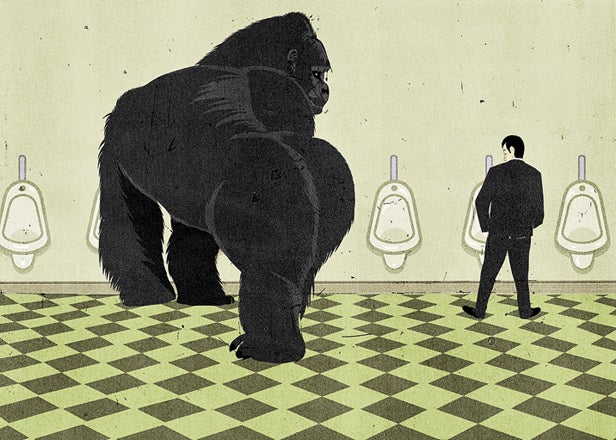Q. Why do gorillas have such small genitals?
The Wild File
For more on the mysteries of the world around you, visit .A. Though we doubt you've actually compared members with a gorilla, that's right: gorilla junk is only about the size of your pinkie. So how'd Kong get shafted? It comes down to the way our mating habits evolved, says psychologist Christopher Ryan, co-author, along with his wife, Cacilda Jethá, of . Among polygynous species—one male, many females—like gorillas and elk, males typically duke it out for control of a harem. “Those who lose get expelled from the group,” says Ryan, “and they don't get to mate at all. That way the genes for ferocity, strength, and size get passed along.” For such creatures, genital size is irrelevant, so they've stayed small.
But among promiscuous species like chimps, bonobos, and—surprise!—humans, the battle takes place among sperm cells rather than individuals. (Ryan and Jethá hypothesize that humans became monogamous only when they started owning property and needed a way to determine inheritance.) Among species in which many males have historically copulated with many females, natural selection favors large genitals with ample reserves of hard-swimming sperm.
Human testes produce so much sperm, in fact, that they have to reside outside the body, where it's cooler, which aids sperm survival. “It's like having a refrigerator in the garage for beer,” says Ryan. “If you're the kind of guy who has a spare beer fridge, you're expecting a party to break out at any moment.” And when that party's over, it's the winning sperm cell that determines whose genetics get passed on. A more developed member gives the little guys something of a head start.


